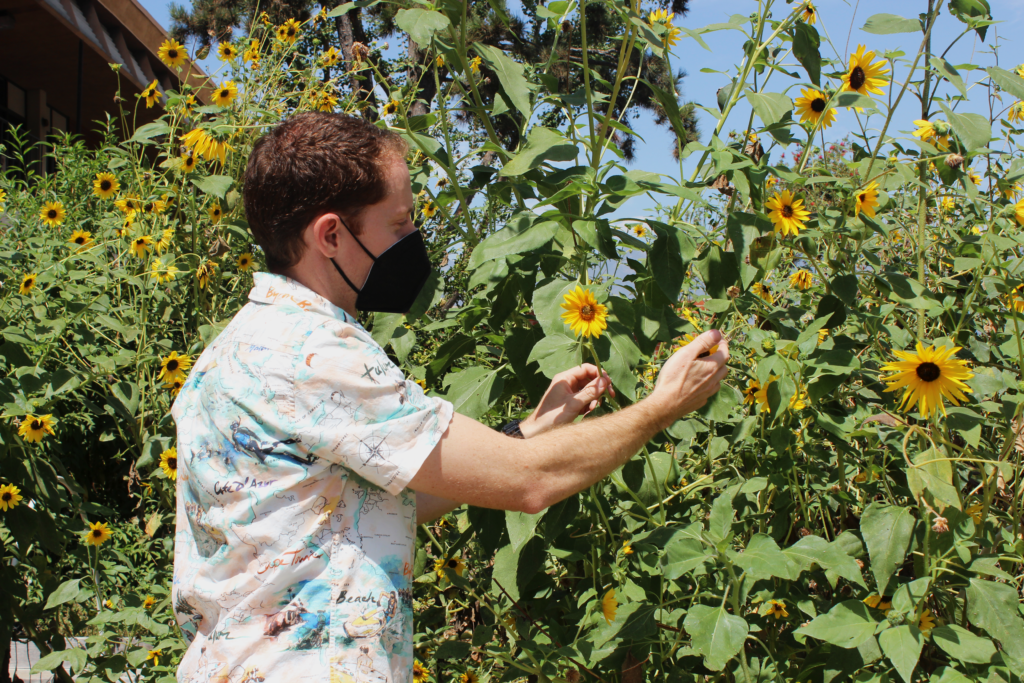By Tiffany Phan
Staff Writer

PHOTO/ Tiffany Phan
The unforgiving California sun bore down on AP Environmental Science teacher Chris Cunningham as he toiled over the school garden, watering each plant with care and ensuring they got the sustenance they needed. Once he finished his rounds and visited every vine, tree and flower that the garden had to offer, he stepped back and examined his work with a satisfied eye. It may be hard work, but to him, it was worth the trouble to see this little bit of nature on campus bloom.
Former AP Environmental Science teacher Scott Randles, who retired in June 2020, originally created the garden by the 400 wing on the west side of campus. The purpose of the garden was to provide an outdoor lab space where students could get in touch with nature and gain first-hand experience with plants. After his retirement, Randles passed the garden’s responsibilities down to the new APES teachers, including Cunningham. However, due to the COVID-19 pandemic, he was unable to work on the garden until the district allowed staff and students back on campus.
“My friends and I sit in the gazebo almost every day,” junior Emily Wang said. “We like to sit there because it’s really private and has a somewhat magical feeling to it. Even though it’s a bit dusty, it’s a lively place, which is why we always sit there during lunch.”
The garden features three different sections for students to explore. The far north side contains multiple grow boxes and raised beds where, before the pandemic, students grew squashes and other root vegetables. Many of those plants were removed during quarantine; however, sunflowers and a few others still grow in that area. On the other side of the garden, students can find about 20 different trees that grow many fruits, such as pomegranates, peaches and lemons. In the center, the garden sports a gazebo for students to sit in that is draped in vines.
“I want the garden to become a space where all students can go for any reason, not just science,” Cunningham said. “Hopefully, once we get things up and running again, it’ll become a place for any student and any class to use. I hope that as the garden grows and develops, it becomes a place students enjoy and feel comfortable going to. I want students to know it’s there, and know that they can access it.”
